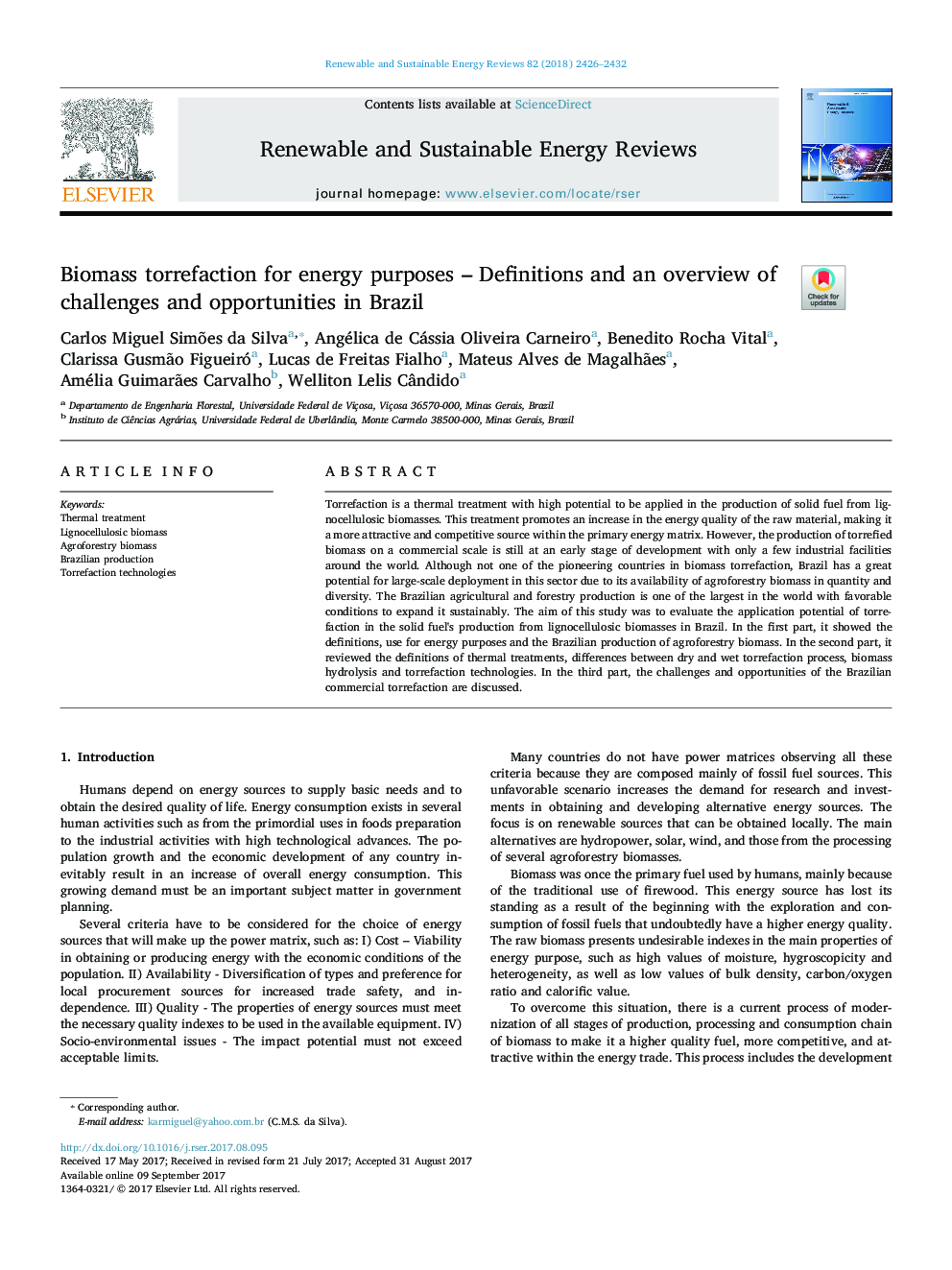| Article ID | Journal | Published Year | Pages | File Type |
|---|---|---|---|---|
| 8111818 | Renewable and Sustainable Energy Reviews | 2018 | 7 Pages |
Abstract
Torrefaction is a thermal treatment with high potential to be applied in the production of solid fuel from lignocellulosic biomasses. This treatment promotes an increase in the energy quality of the raw material, making it a more attractive and competitive source within the primary energy matrix. However, the production of torrefied biomass on a commercial scale is still at an early stage of development with only a few industrial facilities around the world. Although not one of the pioneering countries in biomass torrefaction, Brazil has a great potential for large-scale deployment in this sector due to its availability of agroforestry biomass in quantity and diversity. The Brazilian agricultural and forestry production is one of the largest in the world with favorable conditions to expand it sustainably. The aim of this study was to evaluate the application potential of torrefaction in the solid fuel's production from lignocellulosic biomasses in Brazil. In the first part, it showed the definitions, use for energy purposes and the Brazilian production of agroforestry biomass. In the second part, it reviewed the definitions of thermal treatments, differences between dry and wet torrefaction process, biomass hydrolysis and torrefaction technologies. In the third part, the challenges and opportunities of the Brazilian commercial torrefaction are discussed.
Related Topics
Physical Sciences and Engineering
Energy
Renewable Energy, Sustainability and the Environment
Authors
Carlos Miguel Simões da Silva, Angélica de Cássia Oliveira Carneiro, Benedito Rocha Vital, Clarissa Gusmão Figueiró, Lucas de Freitas Fialho, Mateus Alves de Magalhães, Amélia Guimarães Carvalho, Welliton Lelis Cândido,
